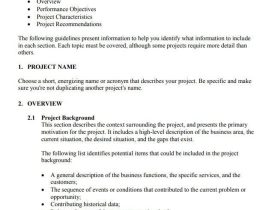Running is one of the most accessible forms of exercise, offering a simple yet powerful pathway to physical fitness and mental clarity. However, as anyone who has laced up their sneakers can attest, it is not without its challenges. The rhythm of footfalls on pavement can quickly turn from a soothing melody to a cacophony of aches and pains if the proper precautions are not taken. In this article, we dive into the key considerations for injury-free running, uncovering actionable tips to enhance your practice and ensure that each run feels invigorating rather than exhausting. Whether you’re a seasoned marathoner or a casual jogger, understanding the nuances of technique, preparation, and recovery can transform your experience, allowing you to savor every mile without the shadow of injury looming over you. Let’s explore the essential strategies that can help you run strong, run smart, and ultimately, run free of injury.
Mindful Preparation: Crafting a Balanced Routine for Endurance and Resilience
To cultivate a practice that prioritizes endurance and resilience, it’s essential to engage in thoughtful preparation that harmonizes both body and mind. Start by establishing a **daily routine** that incorporates various elements designed to bolster your running journey:
- Structured Training Plans: Tailor your weekly schedule with a mix of long runs, tempo sessions, and recovery days to prevent overexertion.
- Nutrition Focus: Fuel your body with a balanced diet rich in carbohydrates, proteins, and healthy fats to enhance performance and aid recovery.
- Cross-Training Opportunities: Enrich your routine with activities like swimming, cycling, or yoga to build strength and flexibility, reducing your risk of injury.
- Mental Conditioning: Incorporate mindfulness or visualization techniques before your runs to increase focus and strengthen mental resilience.
- Consistent Sleep Patterns: Prioritize quality sleep; aim for 7-9 hours per night to promote effective recovery and sustained energy levels.
In addition to these elements, consider tracking your progress through a simple table to visualize your achievements:
| Week | Distance (Miles) | Recovery Activities | Notes |
|---|---|---|---|
| 1 | 15 | Yoga, Light Strength Training | Felt strong, good pace |
| 2 | 18 | Swimming, Foam Rolling | Minor fatigue, focus on hydration |
| 3 | 20 | Cycling, Meditation | Improved endurance, maintain nutrition |
By thoughtfully integrating these components into your routine, you’ll foster not just improved performance but also a deeper connection with your running journey, paving the way for longevity and enjoyment in your practice.
Techniques and Tools: Elevating Your Running Game with Smart Strategies
To truly enhance your running experience and reduce the risk of injury, incorporating a combination of innovative techniques and smart tools is essential. Consider integrating the following strategies into your routine:
- Dynamic Warm-Ups: Engage in movements that mimic the running motion, such as leg swings and lunges, to prepare your muscles and joints.
- Proper Footwear: Invest in high-quality running shoes tailored to your foot type, ensuring they provide adequate support and cushioning.
- Cross-Training: Balance your running regimen with activities like cycling or swimming to improve overall strength and flexibility.
- Mindfulness Techniques: Implement breathing exercises and visualization practices to enhance mental focus during runs.
Additionally, utilizing technology can significantly enhance your training. Wearable devices like fitness trackers and smartwatches can help monitor your heart rate, pace, and distance, allowing you to make informed adjustments to your training plan. Here’s a simple overview of popular running apps:
| App Name | Key Features |
|---|---|
| Strava | GPS tracking, performance analysis, social sharing |
| Nike Run Club | Audio coaching, personalized plans, community challenges |
| MyFitnessPal | Calorie tracking, nutrition insights, goal setting |
By weaving these techniques and tools into your running practice, you will not only elevate your performance but also cultivate a more enjoyable and injury-free experience on the road or trail.
Wrapping Up
As you lace up your shoes and head out for your next run, keep in mind that the journey to becoming an injury-free runner is more than just physical. It’s about nurturing a holistic approach that encompasses knowledge, preparation, and mindfulness. By integrating the tips outlined in this article into your practice, you’ll pave the way for not only a more enjoyable running experience but also a sustainable one. Remember, consistency is key, but so is listening to your body and respecting its limits. So take a moment to reflect, adapt, and embrace the path ahead—one mindful step at a time. Happy running!









Leave a Reply